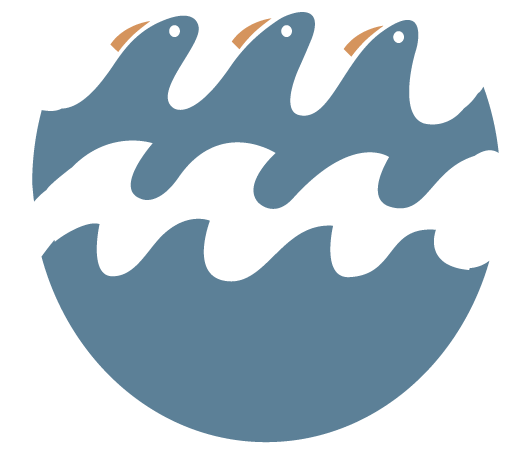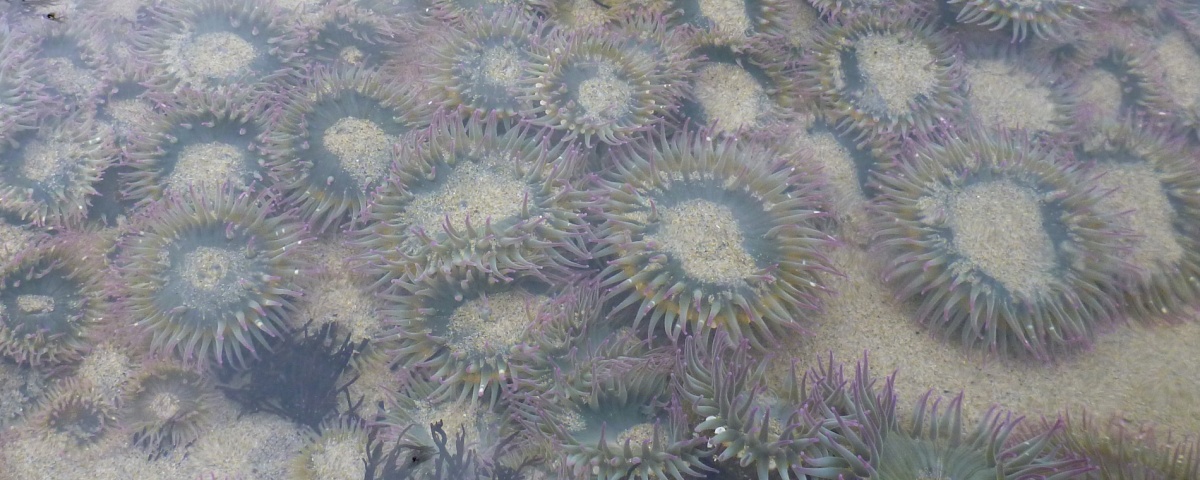It’s just a narrow strip of low-lying rocks. It barely sticks out of the sand. It takes a pounding from the surf and periodically gets buried by building sands. I walked past these rocks for years without paying much attention, and it’s not surprising; they don’t look too promising.
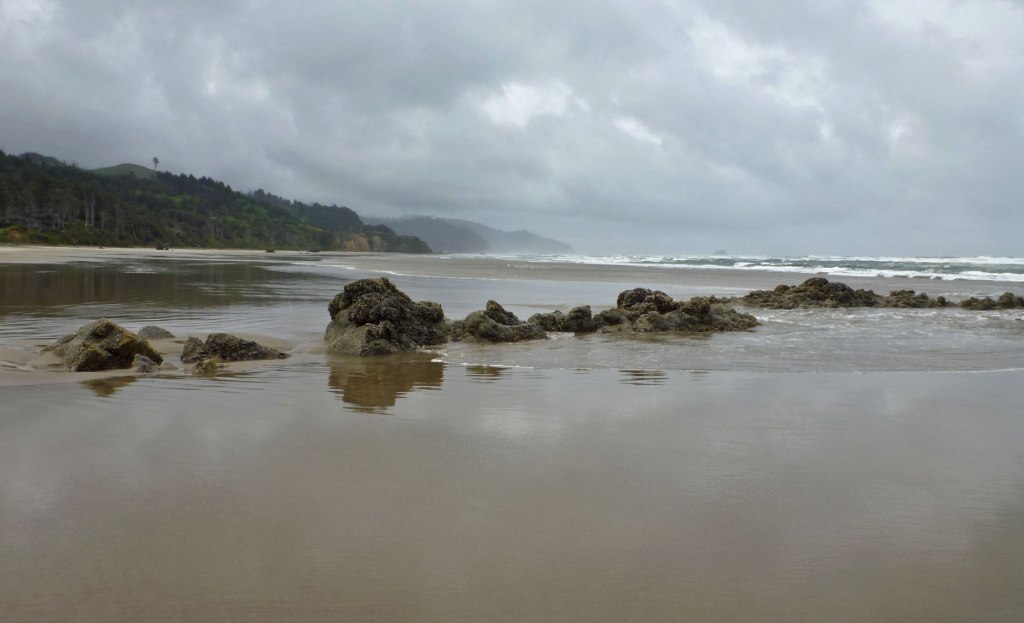
By promising, I mean gaudy displays in crystal tidepools, like the one featured in the image below.
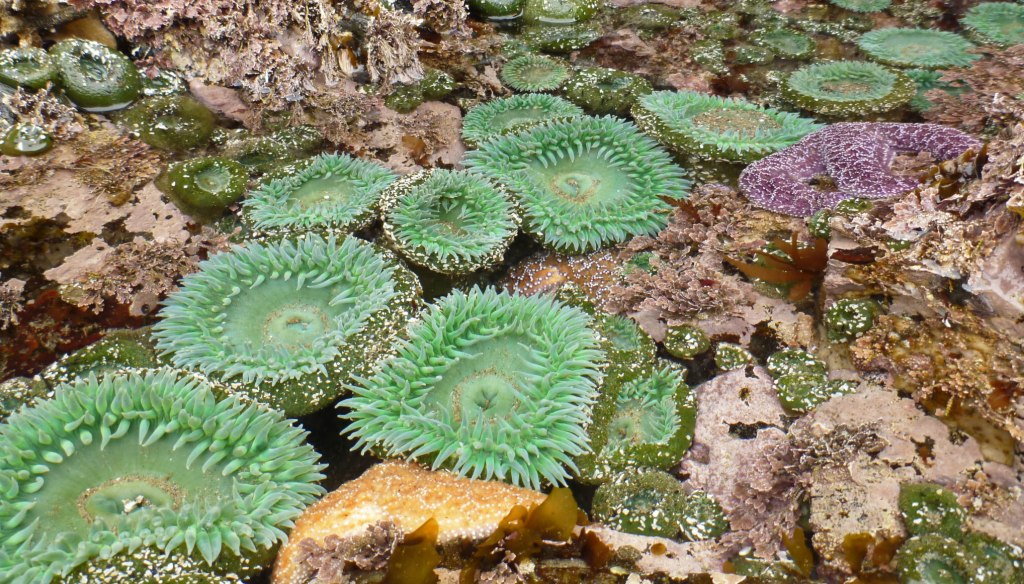
Not so on shallow rocky spines where tidepools, if they exist, are meager and sand scouring and sand burial are dominant themes. There are two common anemones on the low rocks featured in this post. The big green one is Anthopleura xanthogrammica, a familiar tide pool anemone. It goes by common names like giant green or green surf anemone. I wouldn’t call them solitary, but they usually don’t crowd and can get large by anemone standards. The smaller pink anemone shown below is Anthopleura elegantissima, the aggregating or pink-tipped green anemone. They come into their own where rock meets the sand.
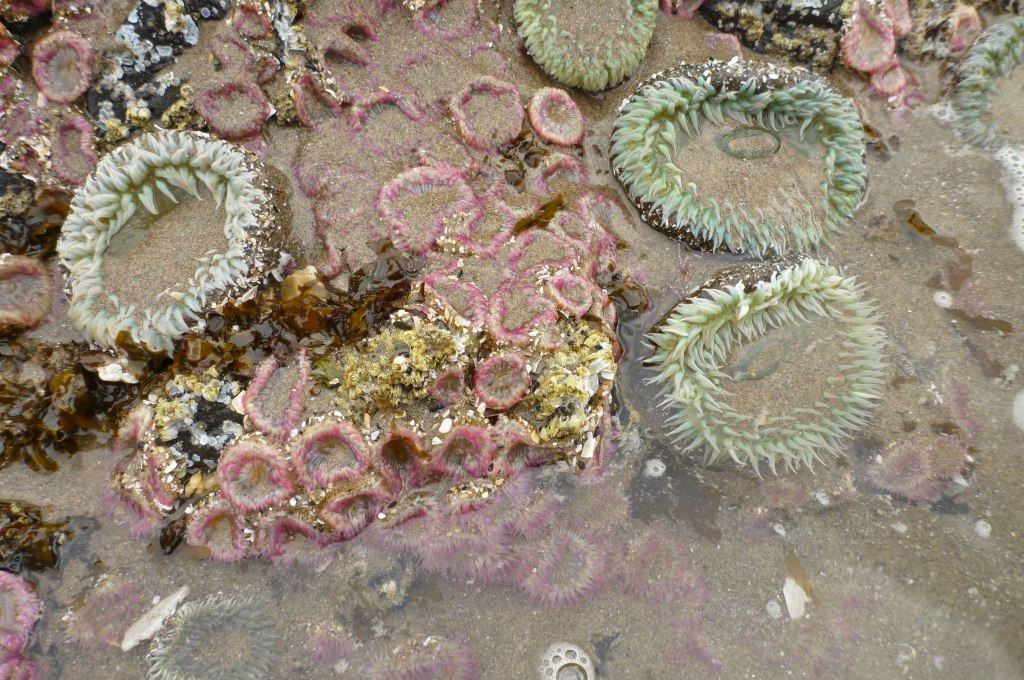
Given a pool in which to open their disks and display their tentacles, fresh colonies of spring Anthopleura elegantissima make an attractive pink contrast to their drab sand scoured surroundings.
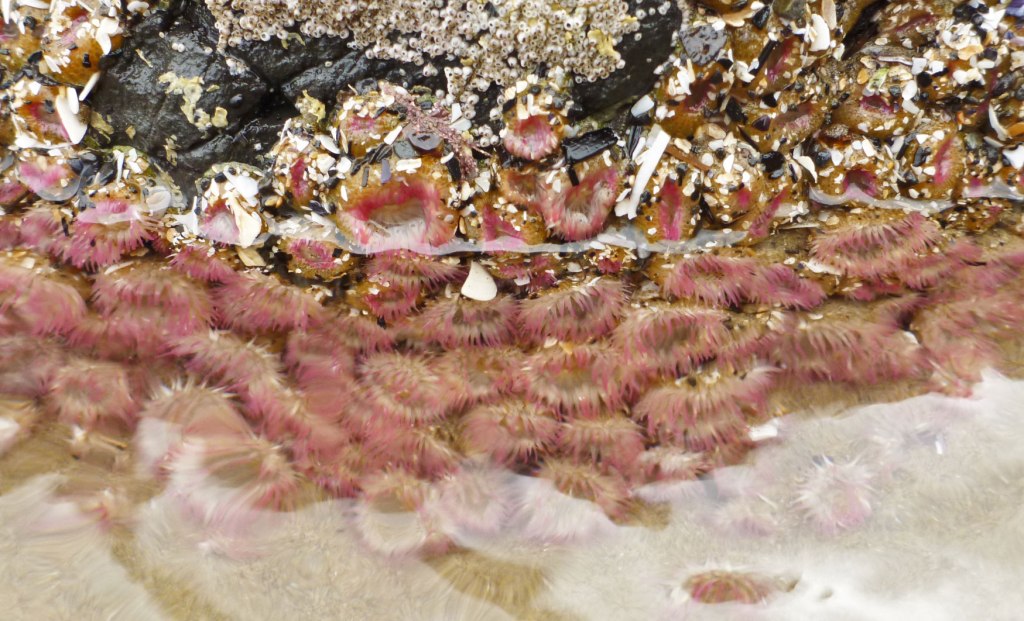
The low tide exposes the colony in this image, and their disks are closed, hiding their beautiful tentacles. At a distance, the perception is of bare rock. However, on close inspection, it’s easy to see why people call A. elegantissima the aggregating anemone. They form dense carpets. How many do you see in this image?
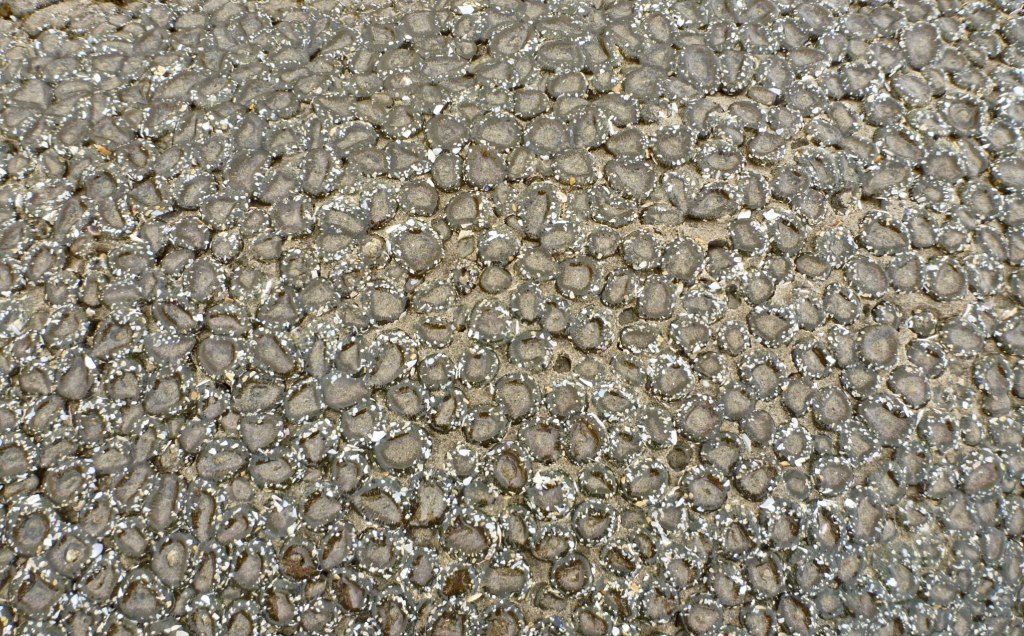
Aggregating anemones can handle the sand, but there is another anemone even more at home with sand. Anthopleura artemisia is so at home with sand and even burying that it is known as the burrowing or buried green anemone. They can be found in protected niches and shallow sand-filled depressions on the exposed outer coast.
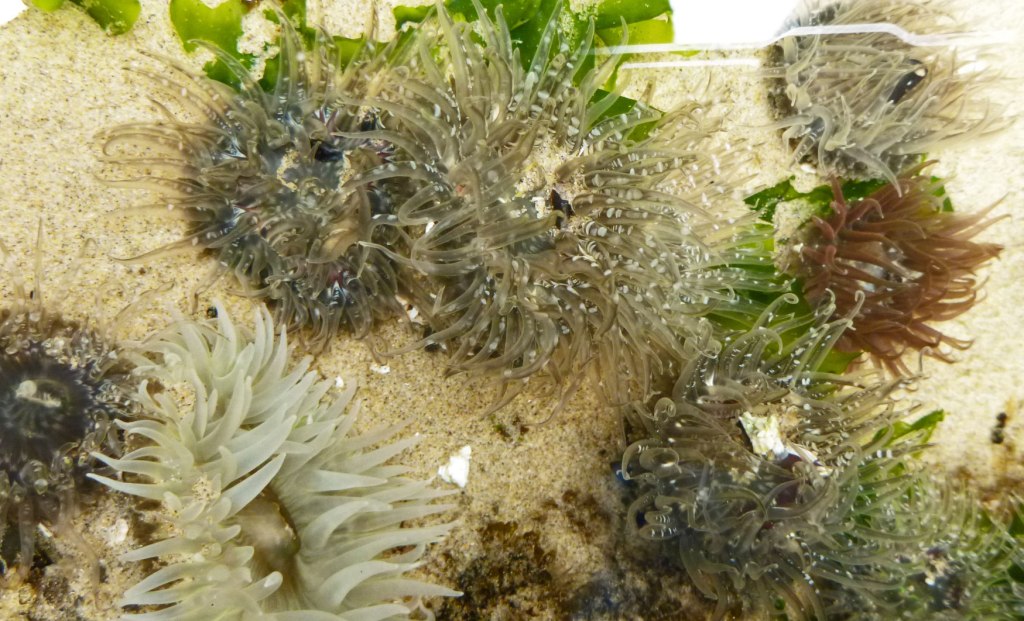
Wherever they are found, they seem to require some burial (or some private niche in which to secret themselves), and all you typically see above the surface is the oral disk and tentacles. And about those tentacles, A. artemisia is most popularly known as the moonglow anemone because of its somewhat luminescent properties.
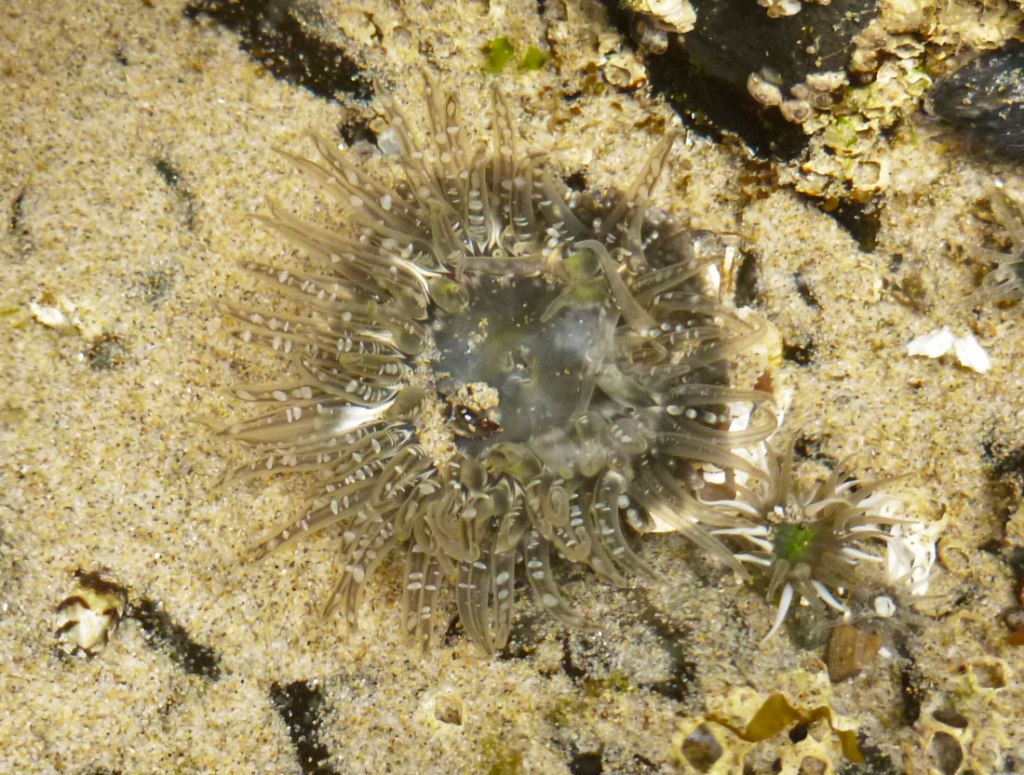
References
Harbo, R. M. 2011. Whelks to Whales: Coastal Marine Life of the Pacific Northwest. 2nd ed. Harbour Publishing Co.
Kozloff, E. N. 1993. Seashore Life of the Northern Pacific Coast. 3rd ed. University of Washington Press.
Lamb, A. and B. P. Hanby. 2005. Marine Life of the Pacific Northwest. Harbour Publishing.
Sept. J. D. 2009. The Beachcomber’s Guide to Seashore Life in the Pacific Northwest. Revised ed. Harbour Publishing.
I updated this post on January 22, 2023
